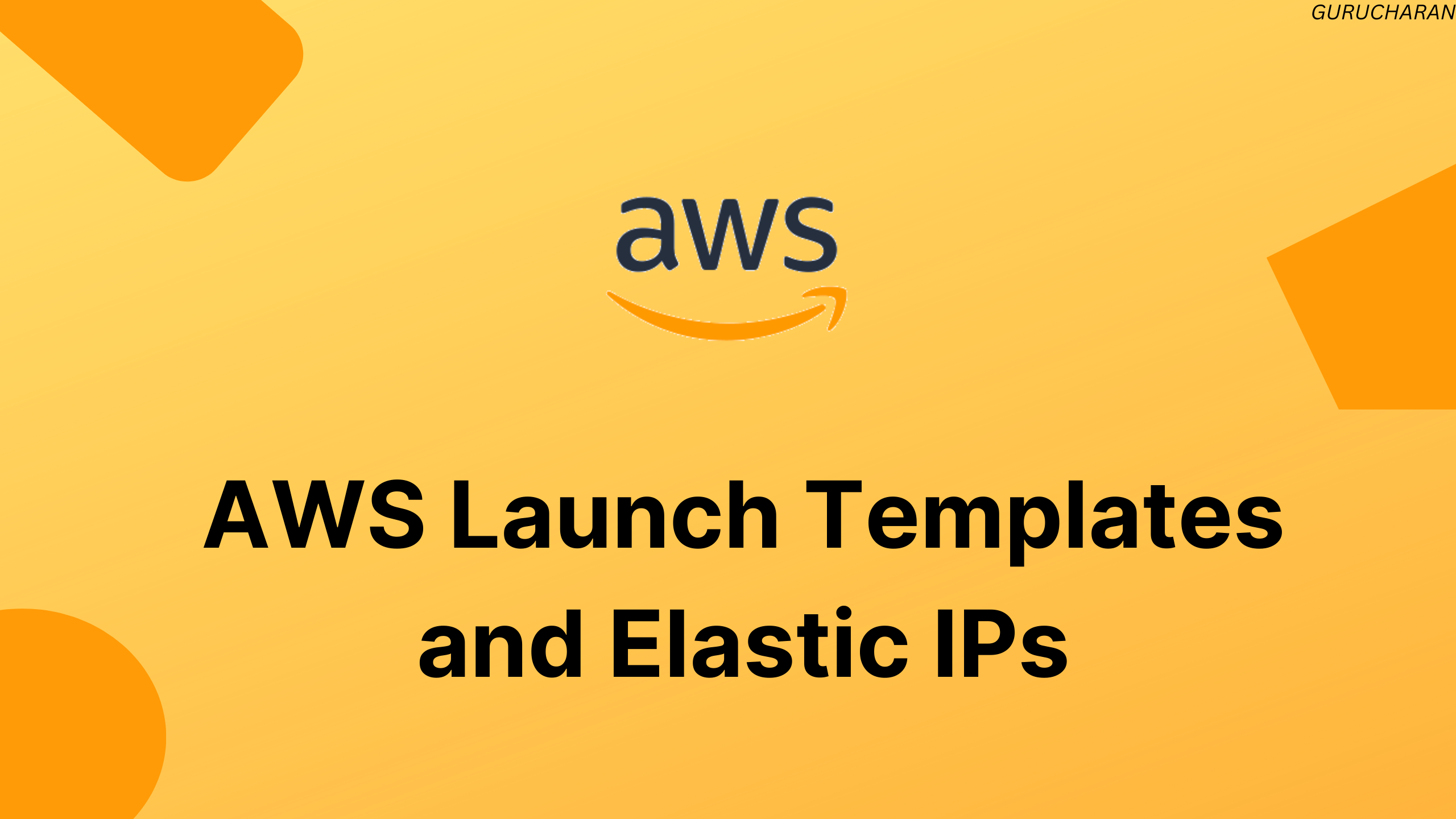AWS Launch Templates and Elastic IPs
 Gurucharan
Gurucharan
AWS Launch Templates and Elastic IPs: An Overview
Amazon Web Services (AWS) provides a suite of cloud computing services that help businesses of all sizes to operate their applications and services with ease and efficiency. Two of the most important AWS services for managing infrastructure are Launch Templates and Elastic IPs. These services allow users to automate the deployment of instances, scale their infrastructure, and ensure reliable connectivity for their applications.
AWS Launch Templates
AWS Launch Templates are a feature of Amazon Web Services (AWS) that allow users to define a template for launching instances on Amazon Elastic Compute Cloud (EC2). These templates provide a set of launch parameters for EC2 instances, including instance type, operating system, security groups, and storage configurations.
By using launch templates, users can quickly and easily launch EC2 instances with predefined configurations. They can also make use of advanced features such as instance metadata and user data to automate the setup of instances. This can save time and reduce the chance of errors during instance launch.
Benefits of AWS Launch Templates
Consistency: Launch templates ensure consistency in instance launches, by providing a predefined set of launch parameters that can be used across multiple instances.
Automation: Launch templates can be used to automate the launch of instances, by using user data and instance metadata to automatically configure instances during launch.
Simplification: Launch templates simplify the process of launching instances, by providing a single template that can be used across multiple instances, reducing the time and effort required to launch instances.
Flexibility: Launch templates can be used to launch instances in a variety of scenarios, such as in an Auto Scaling group or through an Amazon Elastic Container Service (ECS) cluster.
Use Cases for Launch Templates
Launch Templates can be used in a variety of scenarios, including:
Auto Scaling: Launch Templates are commonly used with Auto Scaling groups to automatically launch instances based on demand.
Blue/Green Deployments: Launch Templates can be used to automate the deployment of new versions of applications, enabling users to switch traffic between the old and new versions seamlessly.
Disaster Recovery: Launch Templates can be used to automate the launch of instances in case of a disaster, ensuring that critical services are available.
Elastic IP
An Elastic IP address is a static, public IP address that can be assigned to an Amazon EC2 instance or a Network Interface. Elastic IP addresses are used to provide a consistent IP address that can be used for services that require a static IP address, such as a web server or email server.
Benefits of Elastic IP
Consistency: Elastic IP addresses provide a consistent IP address that can be used for services that require a static IP address, such as a web server or email server.
Flexibility: Elastic IP addresses can be quickly and easily assigned and unassigned from instances, making it easy to move IP addresses between instances as needed.
Portability: Elastic IP addresses can be transferred between AWS accounts, making it easy to move IP addresses between different accounts or to create a backup of an IP address.
Cost-effective: Elastic IP addresses are free as long as they are associated with a running instance. This means that users can assign and unassign Elastic IP addresses without incurring additional costs.
Conclusion
AWS Launch Templates and Elastic IPs are two important features of Amazon Web Services that can help simplify and streamline the process of launching and managing instances. By using these features, users can save time, reduce the chance of errors, and provide a consistent experience for their customers.
Thank you for reading this blog and if any queries or if any corrections to be done in this blog please let me know.
contact us in Linkedin ,Twitter or email-id gurucharanu716@gmail.com
Subscribe to my newsletter
Read articles from Gurucharan directly inside your inbox. Subscribe to the newsletter, and don't miss out.
Written by

Gurucharan
Gurucharan
Gurucharan DevOps Engineer | Continuous Integration/Continuous Deployment | Automation Enthusiast Welcome to my LinkedIn profile! I'm an aspiring DevOps engineer with a strong background in software development and system administration. My goal is to bridge the gap between development and operations, delivering efficient and reliable software solutions through seamless collaboration. With experience in continuous integration/continuous deployment (CI/CD) pipelines, I specialize in automating software delivery processes to enhance development efficiency and quality. I excel in fast-paced, dynamic environments, leveraging infrastructure as code (IaC) tools like Terraform and cloud platforms such as AWS, Azure, and GCP to create scalable and resilient architectures. My technical skill set includes proficiency in scripting languages (Python, Bash), containerization technologies (Docker, Kubernetes), and configuration management tools (Ansible, Chef). I possess a deep understanding of networking protocols and security principles, ensuring robust and secure environments. Beyond technical experience, I believe in collaboration, cross-functional teams, and continuous learning. I thrive on solving complex challenges and seek opportunities for growth and innovation. If you're looking for a passionate DevOps engineer to streamline software delivery, enhance system reliability, and drive organizational success, let's connect! I'm open to exciting opportunities and collaborations. Feel free to reach out via LinkedIn or email. Let's build the bridge between development and operations, enabling continuous improvement and innovation!